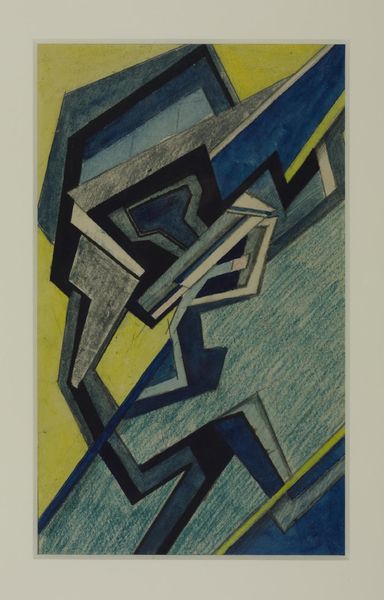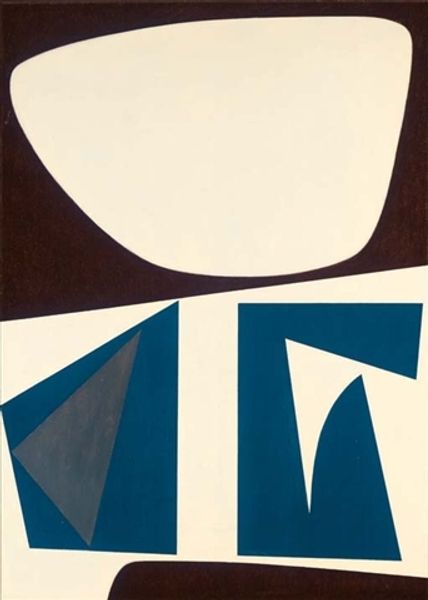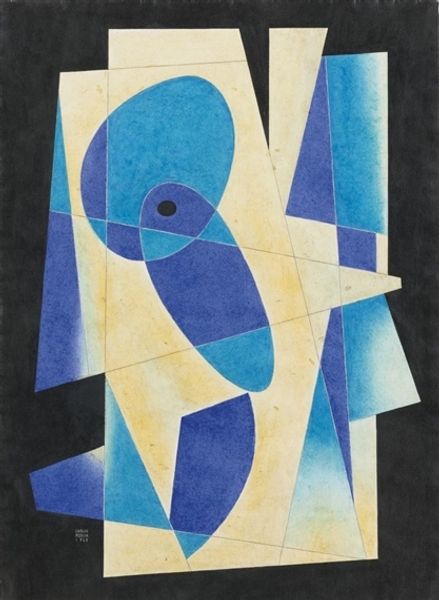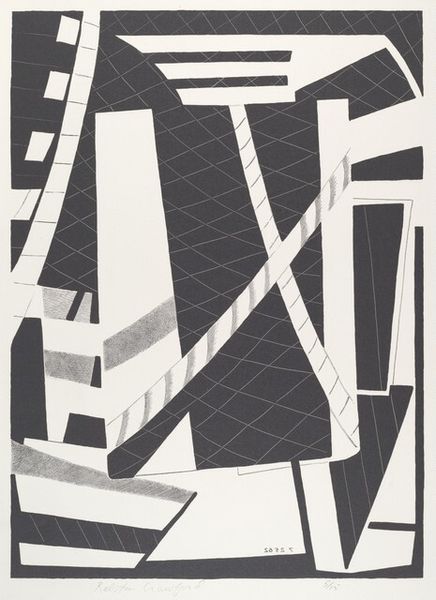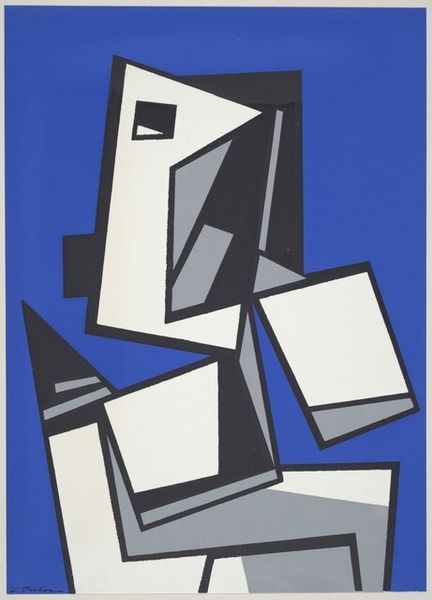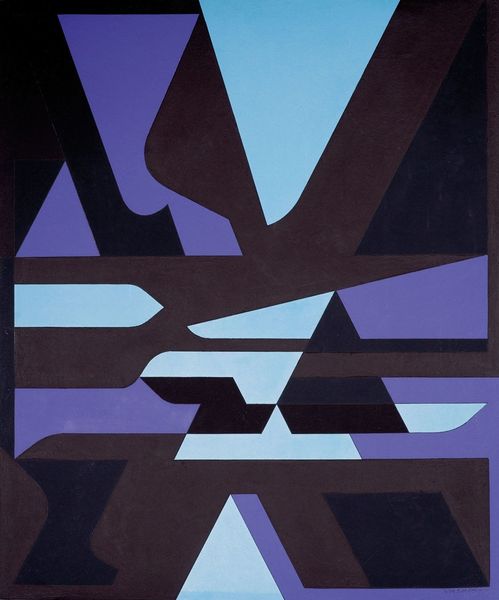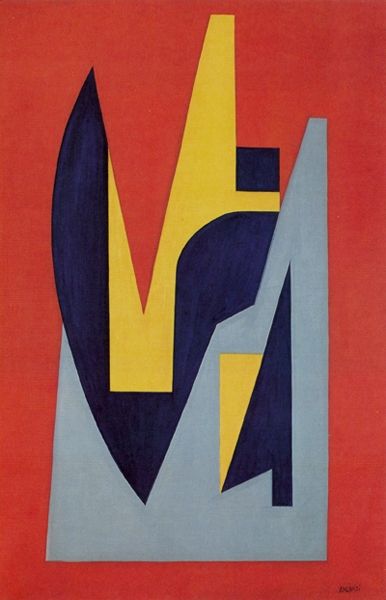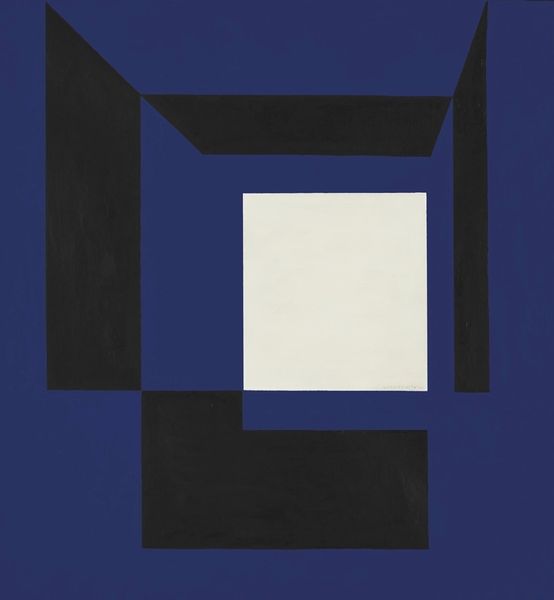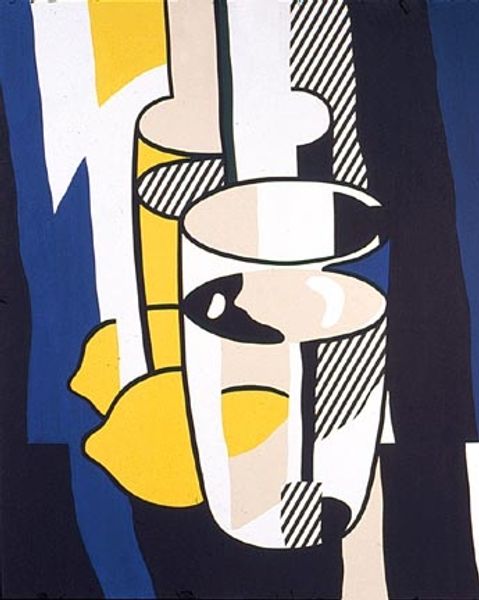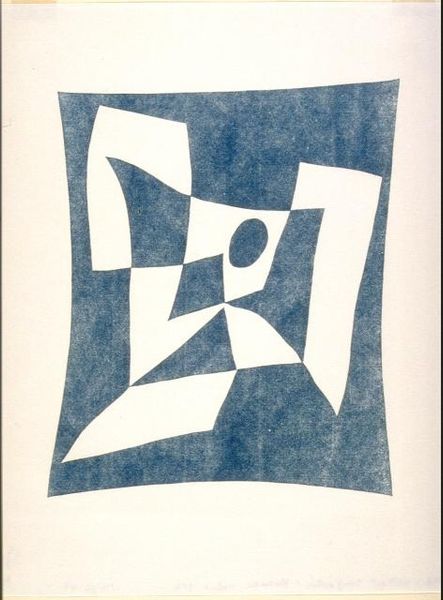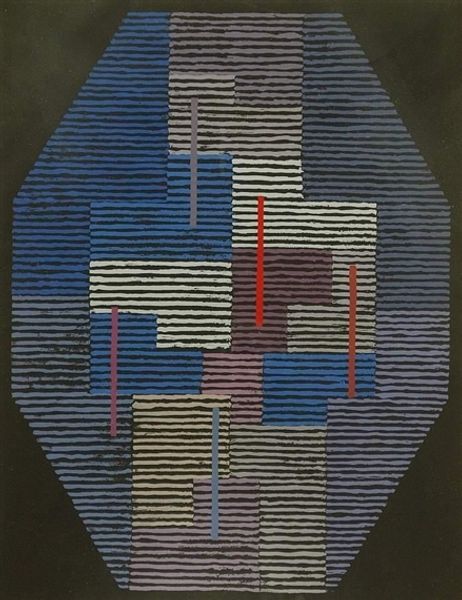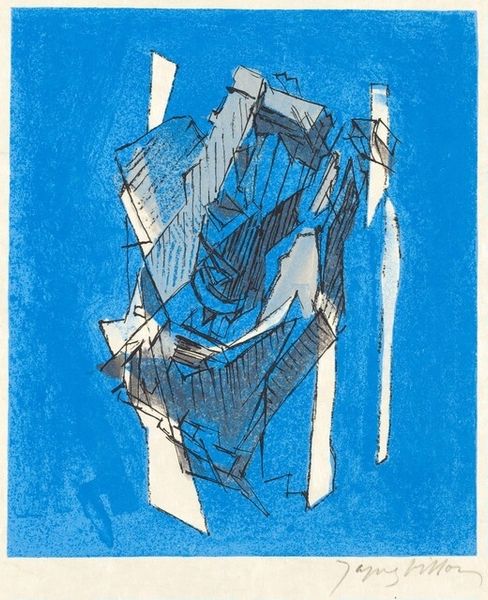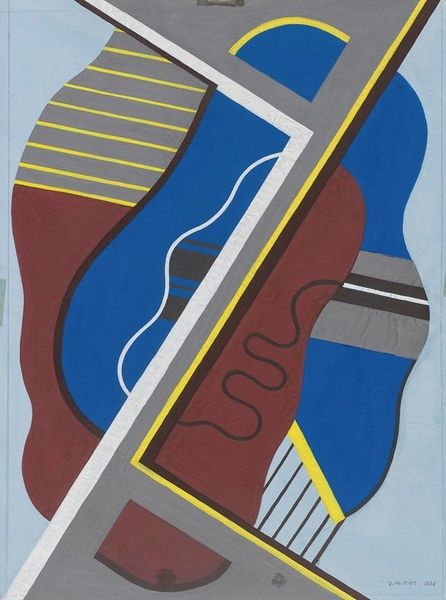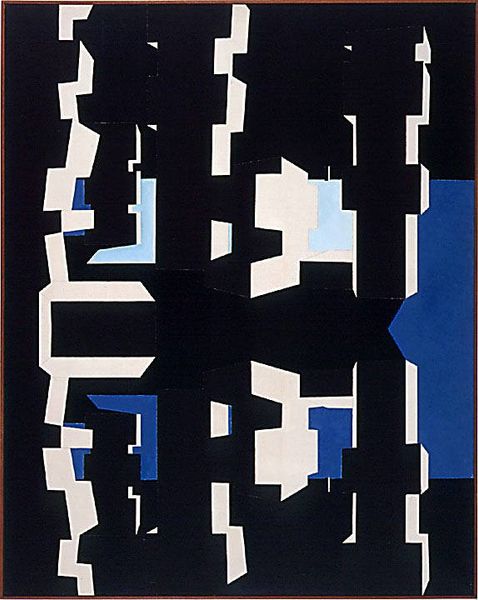
Copyright: Alberto Magnelli,Fair Use
Editor: This is Alberto Magnelli's "Composizione in Azzurro" from 1965, an acrylic painting that strikes me as both playful and deeply considered. The colors are so vibrant, yet the geometric shapes give it this underlying sense of order. What do you see in this piece, from your perspective? Curator: I see a dialogue between formal abstraction and the socio-political landscape of the mid-20th century. Magnelli, an Italian artist working in the wake of two World Wars, grapples with reconstructing meaning through abstract forms. Notice the fragmented shapes – could they represent the shattered ideologies and societal structures of the time? And how might the dominance of "azzurro," a hopeful blue, signal a desire for rebuilding? Editor: That’s fascinating. I hadn't thought about it in terms of post-war rebuilding. The ‘hopeful blue’ is a very convincing argument. So you're suggesting that the abstraction isn't just about aesthetics; it's about reflecting a specific historical moment. Curator: Exactly! Think about the rise of modernist architecture and urban planning during this period. There was a similar drive to create new, rational structures from the rubble of the old. Magnelli, like many of his contemporaries, was exploring how abstraction could be a visual language for a new social order. How might feminist theory or critical race theory intersect with these readings? Editor: Hmm, maybe we can view the rigid geometric shapes and lines as representative of social structure. That begs to question if the artist might have been subconsciously questioning how oppressive structures shape and divide societies and create disparity. I have to think more on that, but it's certainly sparked a new perspective for me! Curator: And that's exactly what art should do: invite us to reconsider our assumptions and engage with the world in new ways. This dialogue, bridging history and contemporary thought, enriches our understanding of art’s ongoing relevance. Editor: Definitely. Thanks so much for sharing your insights; I will view artworks very differently going forward.
Comments
No comments
Be the first to comment and join the conversation on the ultimate creative platform.
